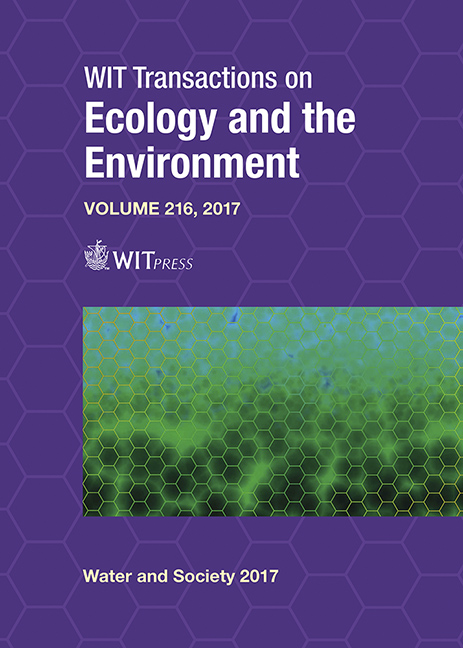ASSESSMENT OF DOSE INTAKE OF TOXIC ELEMENTS IN GROUNDWATER SAMPLES FROM ABUJA, NORTH CENTRAL NIGERIA
Price
Free (open access)
Transaction
Volume
216
Pages
9
Page Range
267 - 275
Published
2017
Paper DOI
10.2495/WS170261
Copyright
WIT Press
Author(s)
OMEJE MAXWELL, JOEL EMMANUEL SUNDAY, ADEWOYIN OLUSEGUN OLADOTUN, AKINWUMI SAYO AKINLOYE, PRAISEGOD CHIDOZIE EMENIKE, IMOKHAI THEOPHILUS TENEBE, OLATOKUNBO OFUYATAN, OKOLIE TOBIAS SOCIIS, HUSIN WAGIRA, HASSINA MOURI
Abstract
This study measured the concentrations of toxic carcinogenic and non-carcinogenic elements present in groundwater using Inductively Coupled-Plasma Mass Spectrometry (ICP-MS). The concentration values obtained were used to calculate the life average daily dose (LADD) exposure of the people whom rely on groundwater for consumption in Abuja, Nigeria. The highest LADD for the carcinogenic toxic element chromium (Cr) was 2.7 x 10-5 μg kg‒1 day‒1, whereas it was 3.3 x 10-4 μg kg‒1 day‒1 for the non-carcinogenic toxic element lead (Pb), identified in water samples collected by the Water Board. These LADD magnitudes of 10-5 and 10-4 for both carcinogenic and noncarcinogenic toxic elements in groundwater are far below the International Reference Dose according to the United States Environmental Protection Agency (USEPA) in 2008, which has a value of 10-1. The low magnitudes found in water samples may not pose significant health risks to the local population. The relevant authorities should, therefore, continue to monitor the impact of human activities on metal pollution in this area and take effective measures to control contamination of the public water supply.
Keywords
Africa, chromium, contamination, dose intake, groundwater, lead, Nigeria, radionuclides, toxicity risk





